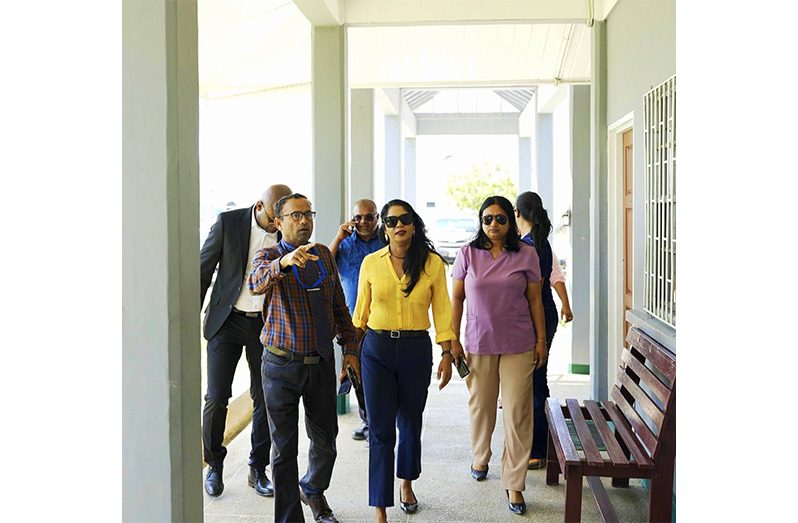IN keeping with the government’s ongoing efforts to expand and decentralise the University of Guyana (UG)’s medical programme, Minister of Education Sonia Parag on Wednesday visited several potential sites in Region Six (East Berbice-Corentyne) to identify suitable spaces that could accommodate medical students outside of the Turkeyen Campus.
Minister Parag was accompanied by Adviser on Education Reform Dr. Kofi Dalrymple, and Regional Executive Officer Narindra Persaud.
During the site visits, the team examined a number of facilities, with the Education Minister expressing particular satisfaction with the available spaces at UG’s Tain Campus, in Berbice, noting that the site meets the academic and logistical standards required for the medical programme.
The visit follows a high-level meeting in September among Minister Parag, Minister of Health Dr. Frank Anthony, and Vice-Chancellor of the University of Guyana Dr. Paloma Mohamed. That meeting focused on advancing plans for the decentralisation of UG’s medical school, a key initiative aimed at addressing the growing number of qualified applicants who are unable to secure spaces at the main campus due to capacity constraints.
This initiative is in direct fulfillment of a commitment made by President Dr. Irfaan Ali to ensure that all eligible students are given the opportunity to pursue higher education in medicine, particularly following the government’s landmark decision to make the University of Guyana tuition-free.
In the first phase of this decentralisation effort, medical studies will be expanded to Regions Two (Pomeroon-Supenaam), Three (Essequibo Islands-West Demerara), and Six. The move is also expected to play a vital role in strengthening Guyana’s healthcare system by producing a larger pool of trained professionals to serve in the nation’s expanding network of healthcare facilities, which now includes six new state-of-the-art hospitals, and several upcoming specialty centres.
Minister Parag emphasised that the government remains committed to ensuring equitable access to tertiary education across the country, while simultaneously addressing the critical human resource needs of the health sector.




.jpg)









